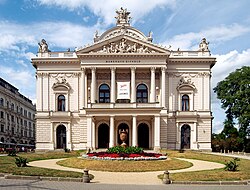Prior to 20th century
| History of Czechoslovakia | ||||||||||||||||||||||||||||||||||||||
|---|---|---|---|---|---|---|---|---|---|---|---|---|---|---|---|---|---|---|---|---|---|---|---|---|---|---|---|---|---|---|---|---|---|---|---|---|---|---|
 | ||||||||||||||||||||||||||||||||||||||
| ||||||||||||||||||||||||||||||||||||||
- 980-1020 - Basilica of the Assumption of Our Lady founded.
- 11th C. - Vratislaus II of Bohemia bestows the town on his younger brother Otto I of Olomouc. [1]
- early 13th C. - Church of St. James established. [1]
- mid 13th C. - Špilberk Castle established. [1]
- 1229 - Brno charter endorsed by Ottocar I of Bohemia. [2]
- 1243 - City incorporated. [2]
- 1296 - Cathedral of St. Peter and Paul established. [3]
- 1343 - Old Town Hall (Brno) in use.[ citation needed ]
- 1356 - Church of St. Thomas consecrated.
- 1428 - Brno unsuccessfully besieged by Hussites. [1]
- 1451 - 27 July: expulsion of the Jews. [4]
- 1467 - Brno besieged by forces of George of Bohemia. [1]
- 1485 - First printing press in operation. [5]
- 1645 - Brno besieged by Swedish forces led by Lennart Torstensson. [1]
- 1655 - Dolní Kounice Synagogue founded.
- 1742 - Brno besieged by Prussians. [1]
- 1766 - Cloth factory begins operating. [6]
- 1777 - Roman Catholic Diocese of Brno established; [7] [3] Mathias Franz Graf von Chorinsky Freiherr von Ledske becomes bishop.
- 1780s - Joseph II, Holy Roman Emperor evicts the friars from St Thomas's Abbey. [1]
- 1782 - Brno becomes capital of Moravia-Silesia.
- 1786 - Lužánky Park established.
- 1805 - 2 December: Battle of Austerlitz occurs near Brno; forces of Napoleon headquartered in city. [2] [1]
- 1818 - Museum Francisceum founded. [8]

- 1822/30 - Silvio Pellico, an Italian writer, confined in Špilberk Castle. [1]
- 1838 - Brno main railway station opened.
- 1839 - Emperor Ferdinand Northern Railway operates to Břeclav.
- 1843 - Labor unrest. [9]
- 1848 - October: Labor demonstration. [9]
- 1849
- German Technical University in Brno founded. [10]
- Population: 45,189. [11]
- 1855 - Synagogue consecrated. [12]
- 1861 - Natural History Society established. [13]
- 1864 - Vankovka engineering works built near Brno. [14]
- 1866 - 13 July: Prussians in power. [15]
- 1867
- Czech-language secondary school founded. [16]
- Red Church construction completed.
- 1869 - Population: 73,771. [11]
- 1870s - Brno Philharmonic begins its existence at the Besední dům.
- 1872 - Starobrno Brewery built.
- 1880 - Gustav Winterholler becomes mayor.
- 1881 - Organ School founded. [17]
- 1882 - Deutsches Stadttheater (Mahen Theatre) built. [18]

Mahen Theatre, Brno - 1891 - Deutsches Haus (Brno) opens.
- 1894 - August Wieser becomes mayor.
- 1899 - Imperial Czech Technical University of Franz Joseph founded. [2]
- 1900 - Population: 108,944. [1]


